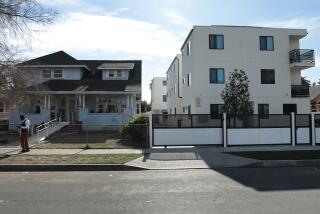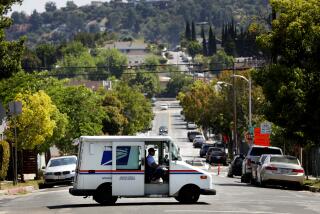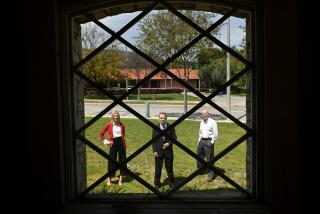Developers Battle Economic Downturns, Lack of Interest : Planned Towns Face Hard Road to Success
WASHINGTON — Building a new town in America is risky business, and only a comparatively few planned communities overcome the obstacles--some predictable, some capricious--that doom many such ventures to failure.
The casualty list includes victims of bad timing, poor location, economic recession, overly ambitious blueprints, unexpected population shifts, overwhelming land costs, devastating lawsuits or inability to attract a healthy industrial base.
Of the 13 new towns that the Department of Housing and Urban Development supported with loan guarantees in the late 1960s and early 1970s, all but one defaulted within the first few years and were judged to be financial failures.
The lone exception was The Woodlands, 30 miles north of Houston, which succeeded largely because of the long-term financial endurance of its developer, who had extensive natural gas holdings.
The list of failures includes Soul City, N.C., the 1960s experiment in rural development for poor blacks that was conceived by civil rights leader Floyd B. McKissick. Lacking any sustaining economic foundation, Soul City never really went anywhere. Compared to plans for an eventual population of 30,000, there were only 180 Soul City residents by the end of 1982.
Other federally supported planned communities that never flourished include Cedar Riverside, a “new-town-in-town” situated on 100 acres of urban renewal land near downtown Minneapolis. It was doomed by lengthy legal challenges on environmental grounds.
Flower Mound, 22 miles northwest of Dallas, is now being built piecemeal by assorted developers rather than completed as a distinctive new town.
Gananda and Riverton, two projected new towns outside Rochester, N.Y., were victims partly of a declining economic growth rate in the region.
Newfields, northwest of Dayton, Ohio, foundered in the collapse of the housing market at the outset of the 1973-74 oil crisis, and half of its 4,000 acres was sold for creation of a state park.
Shenandoah’s remote location, 37 miles south of Atlanta, and its difficulty in finding an adequate water supply crippled its residential development, although it has become a prosperous industrial center.
Although other publicly supported new towns initially went broke, HUD officials say they have managed to hang on, survive and even flourish, usually in scaled-down versions of their original plans.
These survivors include Harbison, eight miles northeast of Columbia, S.C.; Jonathan, Minn., 25 miles southwest of Minneapolis; Maumelle, 12 miles northwest of downtown Little Rock, Ark.; Park Forest South--now called University Park--about 30 miles south of Chicago, and St. Charles, 25 miles south of Washington in southern Maryland.
For every private new town project like Reston, Va., that succeeds, there seem to be several others that flop, or suffer arrested growth when the economic climate turns inhospitable.
The collapse of the synthetic fuels industry in Colorado, for example, forced Exxon Corp. to scale back its plans for an ambitious new town called Battlement Mesa on the Colorado River, 50 miles east of Grand Junction, because of lower-than-expected housing demand.
Spokesmen for Columbia, Md., denied widely circulated reports that the sprawling private new town between Washington and Baltimore never proved profitable for its former owner and chief financial backer, Connecticut General, the insurance company.
Although HUD reported that Connecticut General had written off upward of $50 million in losses before it sold out last September to the Rouse Co., officials at Columbia say the community of nearly 15,000 acres and 65,000 people is “an outstanding financial and social success.”
More to Read
Inside the business of entertainment
The Wide Shot brings you news, analysis and insights on everything from streaming wars to production — and what it all means for the future.
You may occasionally receive promotional content from the Los Angeles Times.










